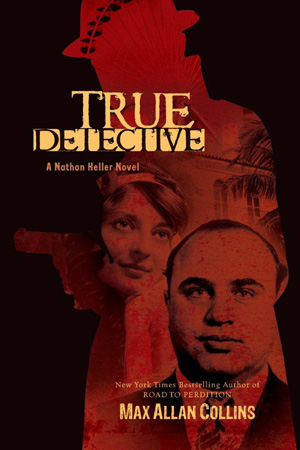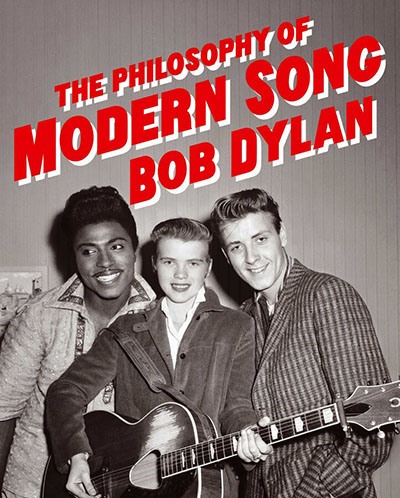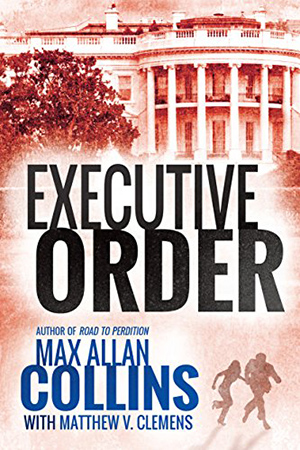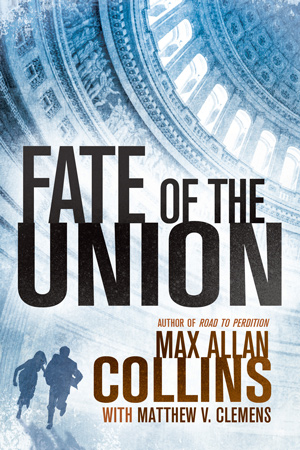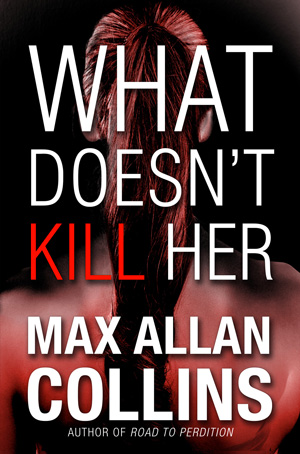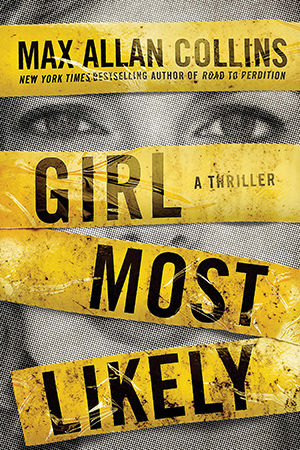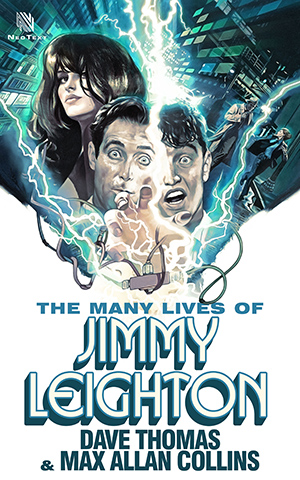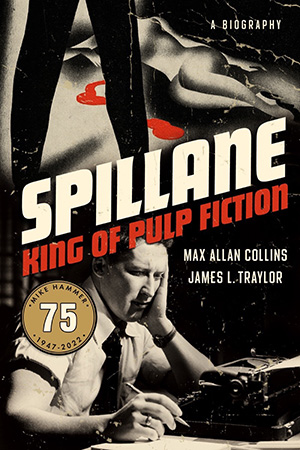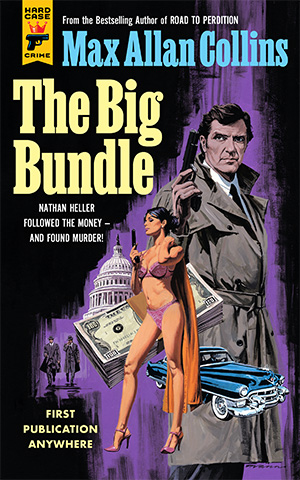I have just completed my proofing of the typeset version of Too Many Bullets, the next (and perhaps final) Nathan Heller novel, coming from Hard Case Crime in the fall of 2023, which seems to be the year we find ourselves in.
A certain number of the hearty souls who check in here regularly (and also those who show up irregularly) are readers of my Quarry, Nolan and other series whose entries run in the traditional 60,000 words or so length. Some others may be comics fan who are interested in Ms. Tree, Road to Perdition and my other occasional forays into graphic noveldom.
This means, these readers have not yet sampled Nathan Heller, the series I consider my best and most significant work. It may be because the books deal with history and these readers are unaware that historical subject matter does not discourage me from trafficking in sex and violence; or perhaps they are put off by the length – these two HCC Heller novels are 80,000 words each. I say gently to these folks that another 20,000 words or so will not kill you, nor will the historical content, although the research for these two recent Hellers damn near killed me. I remind these readers that later this month (delayed by a dock strike in London) physical copies of the new Heller, The Big Bundle, will be available. The e-book and (I think) the audio versions are both available now.
But a certain kind of reader – I will not go so far as to invoke OCD or Anal Retentive tendencies, having both of those conditions myself – won’t start reading a new series anywhere but the beginning. Despite my concerted efforts to make each Heller novel stand alone, such readers are stubborn about starting at the start.
For that reason I am pleased to announce that True Detective (1983) will be promoted via Amazon Monthly Deals: starting 1/1/2023 and running through 1/31/2023, the first Nathan Heller novel (a winner of the Best Novel Shamus from the Private Eye Writers of America) will be offered on e-book at 1.99 USD.
Doing the read-through (and tweaking of) Too Many Bullets was an interesting experience. I felt generally very good about the book – in fact, I was really satisfied with it and felt like it showed me at the top of my game.
And I was writing well during the months of actual writing (many months of research preceded that), despite having health issues then, including two brief hospital stays related to my A-fib. But despite what I felt was a high standard of work, I also came across uncharacteristic lapses – word repetition, pronoun confusion, and occasional lack of clarity.
It was odd to see me with my powers intact but now and then flagging, probably due to those health issues. Thankfully I am doing much better on that front, but it was sobering to see the lapses. I’m sure advancing age is another factor. But I will keep at this as long as my marbles are more or less intact.
Still, I’m sure my HCC editor Charles Ardai will wince when he sees I am sending 44 correction pages out of 300 hundred pages or so.
As for whether there will be another Heller novel after Too Many Bullets, that depends on sales, frankly. I have yet to write the major Heller/Hoffa novel I’ve had in mind for, oh, thirty years.
But we are at least nearing the end of Heller’s run. The research is just too daunting for a duffer.
About a month ago, here, I wrote this (feel free to skip):
On Christmas Eve 1992, still shellshocked, I wrote “A Wreath for Marley,” the lead story in the
Blue Christmas collection ($2.99 on e-book). It has been published several times, including in the Otto Penzler anthology, The Big Book of Christmas Mysteries. The story is what they call (hideously) a “mash-up” – of A Christmas Carol and The Maltese Falcon. Its significance is that it showed me getting back into the game after two bad batterings. The story is a long one, probably 15,000 words, and was done in one fevered sitting. It remains my favorite short story of mine.It almost became my second indie movie – there’s a script, you will not be surprised to learn – but the success of Mommy led to us deciding to do
Mommy’s Day instead.Since I wrote this post, I’ve been exploring – with Chad Bishop, who put together Encore for Murder with me as a video presentation (stay tuned) – mounting a production of Blue Christmas here in Muscatine that could be presented as a live performance but also shot as a feature much as we did Eliot Ness: An Untouchable Life.
But Blue Christmas exists as a novella and as a film script, and no live performance version was ever written. Adding a second level of problems, er, challenges, a script for the stage is needed, with an eye on putting together the feature. So it needed to be a hybrid – a screenplay written for the live-performance stage.
Does your head hurt yet?
Still, I have long intended to someday take the time to write a stage play version of Blue Christmas. It’s a story I believe in and that has special resonance for me, as the piece of fiction I wrote on a long-ago Christmas eve that got me back up on the one-horse sleigh writing again after having my career get yanked out from under me.
Anyway, I spent a week on it, over Christmas (appropriately) and I’m very happy with it. Putting together a piece that was intended to have fairly elaborate special effects for a low-budget indie film and doing it instead live on stage…tricky. I am proud of how I solved the challenges…the problems…as the only stage play I’ve previously written is Eliot Ness.
But, as I say, it’s set up in a screenplay manner, in part because we are going after a couple of grants that are intended for backing low-budget feature films, not stage productions.
In the meantime, I’m entering Encore for Murder in a couple of Iowa film festivals, getting back in the game a little. As much as I love writing fiction – and even relish the solitary nature of it – I have to admit I’m never happier than when I’m in an editing suite working with my pal, Phil Dingeldein. And working with Chad Bishop has been a joy, as well.
Speaking of Phil, last Thursday he and a two-person crew – Justin Hall and Hannah Miner – came to Muscatine and shot the additional footage for our expanded version of Mike Hammer’s Mickey Spillane. The original documentary was shot in 1998 and released in 1999, and this brings the Spillane story up to date, from Mickey’s final years through the work I’ve done completing his unfinished manuscripts.
We are talking to VCI, who have released a lot of my stuff in the past (but never the Spillane doc) and hope to include Encore for Murder as a bonus feature. It’s a natural flow as we have Gary Sandy talking about playing Mike Hammer in the new documentary footage.
Here’s a two-party review of several of my Batman issues. These fans don’t realize that I was subjected to artist changes (artists who apparently didn’t have access to character designs from the previous issue!) and that no Batman “bible” existed, meaning I had to fly by my bat wings into unknown backstory territory. They do like my Penguin story, however.
Road to Perdition is back on Netflix.
Finally, here’s a great write-up on the forthcoming Nolan two-fer, Mad Money.
M.A.C.
